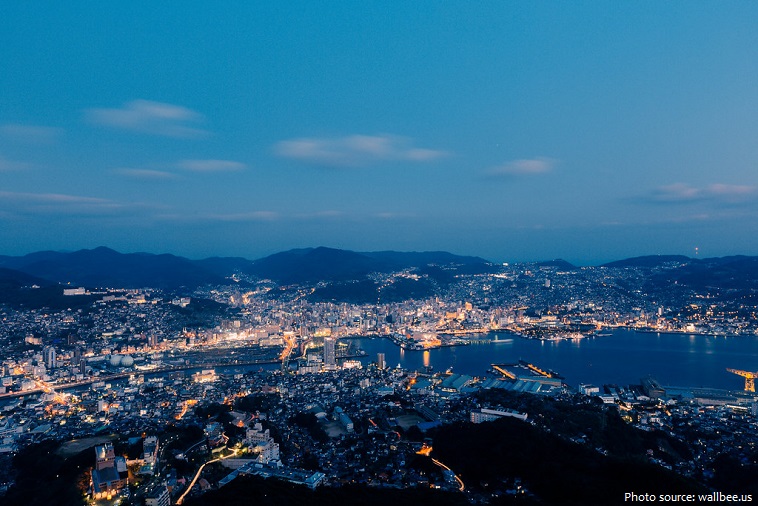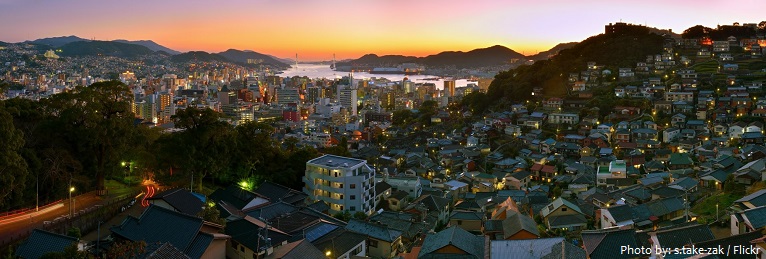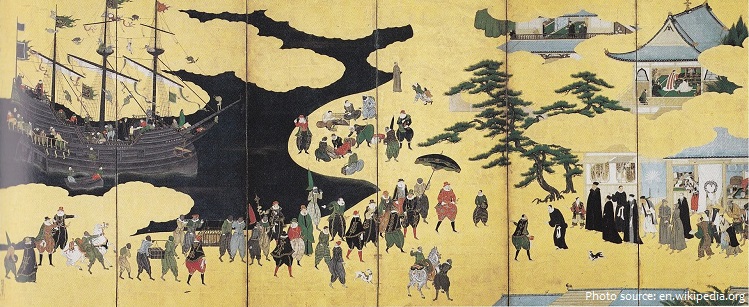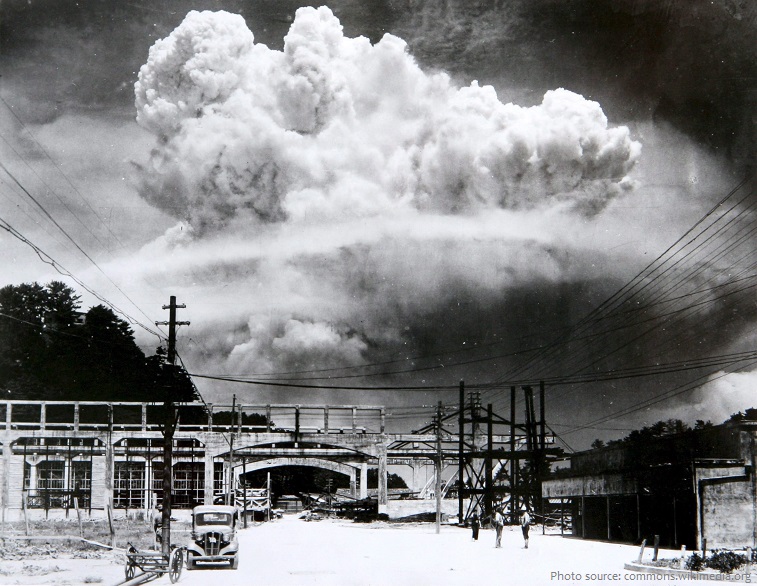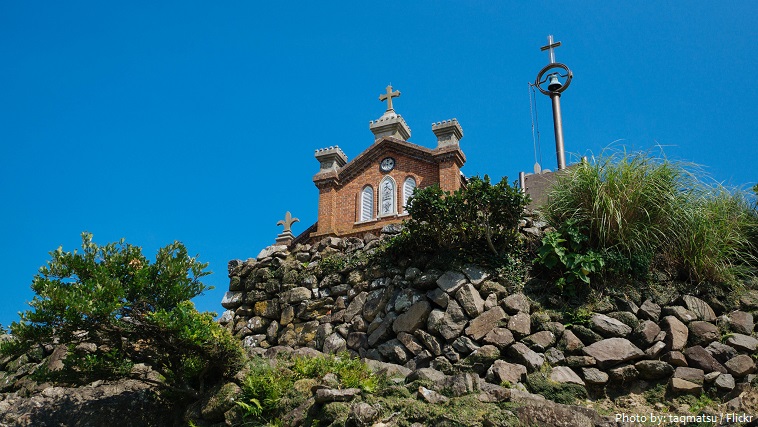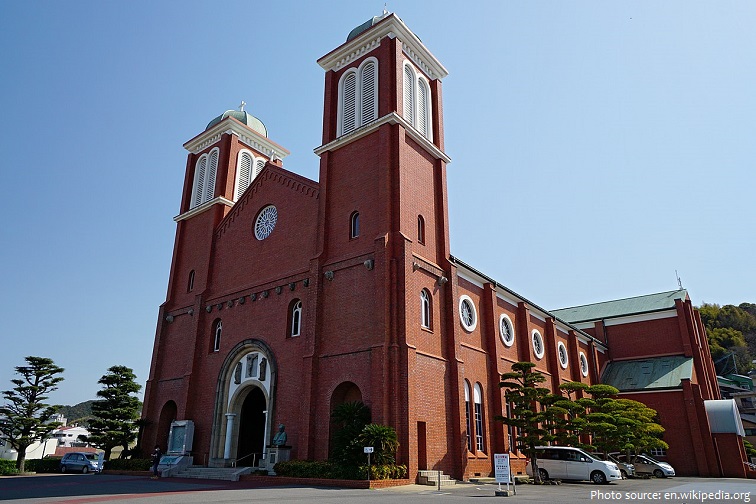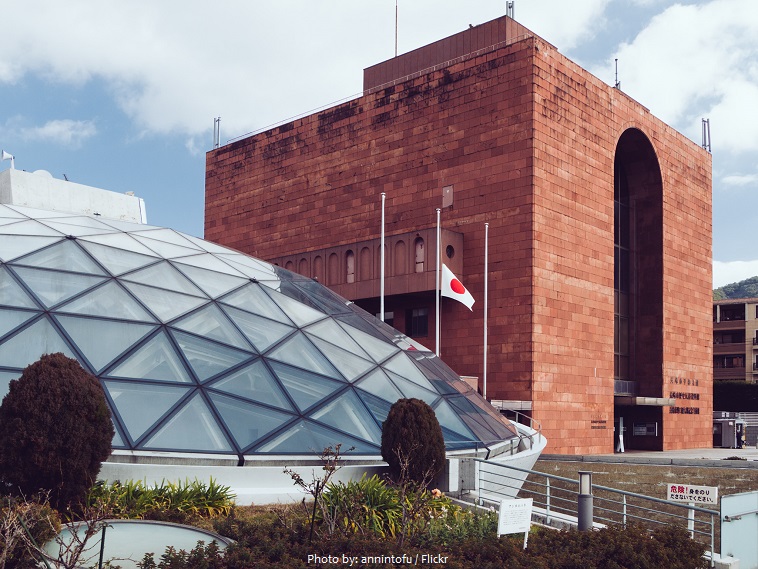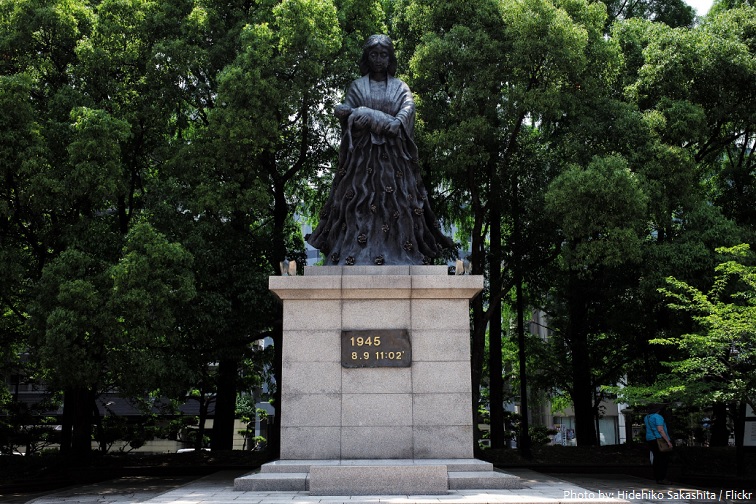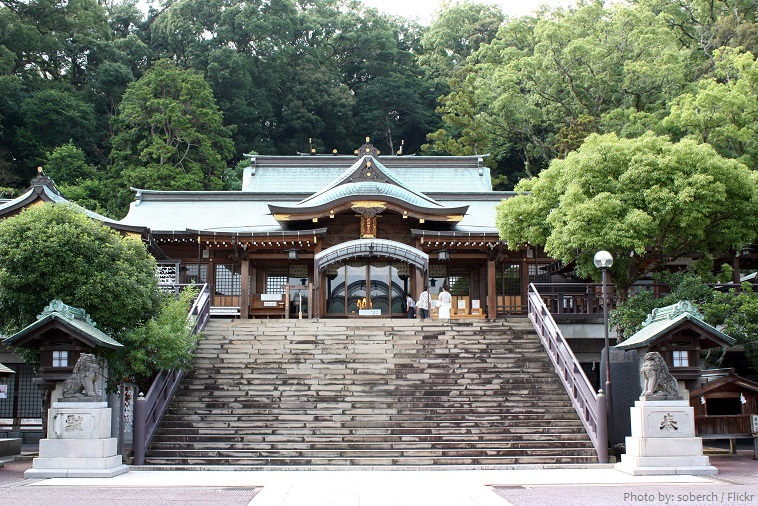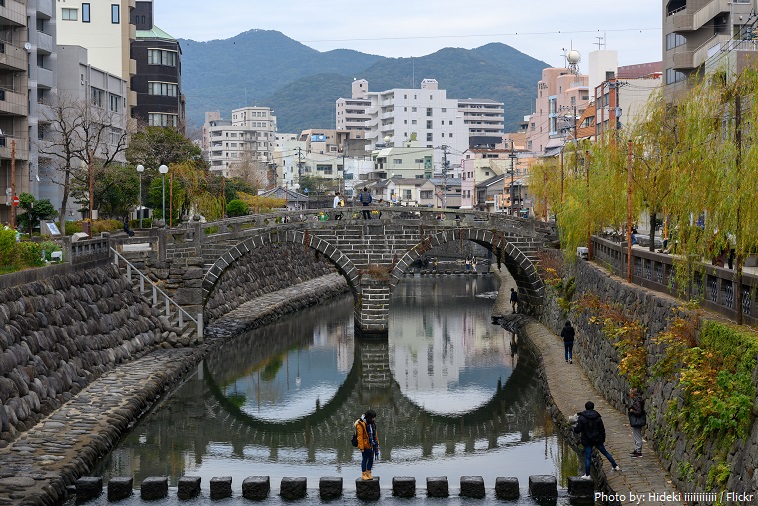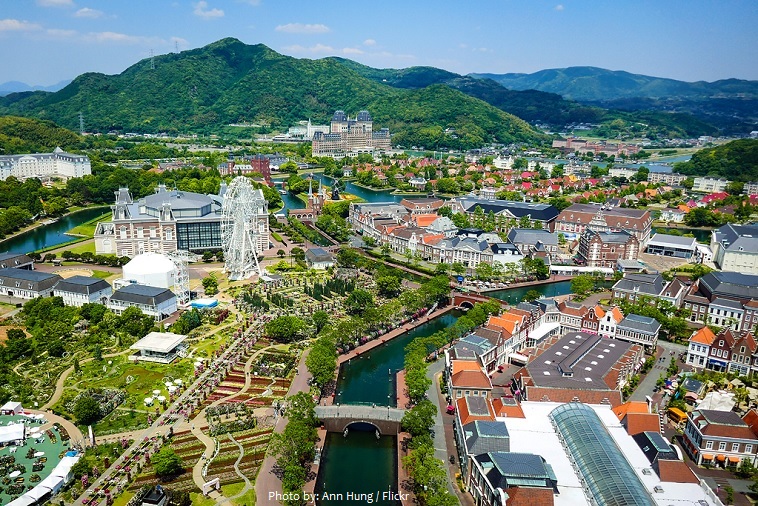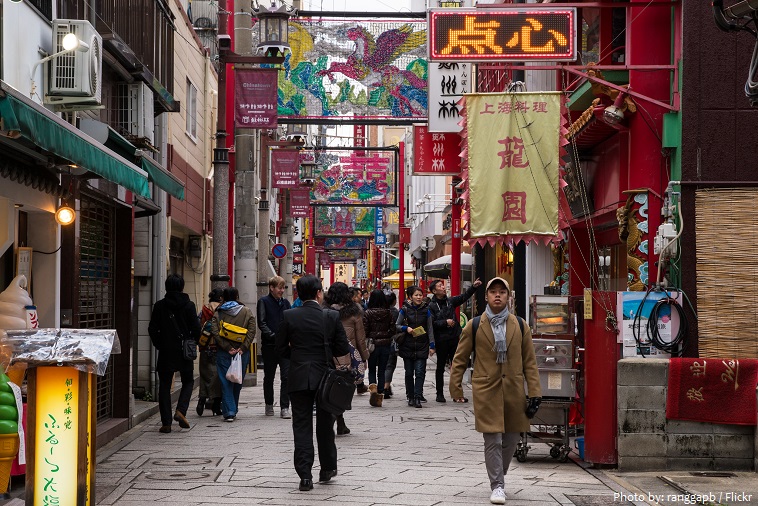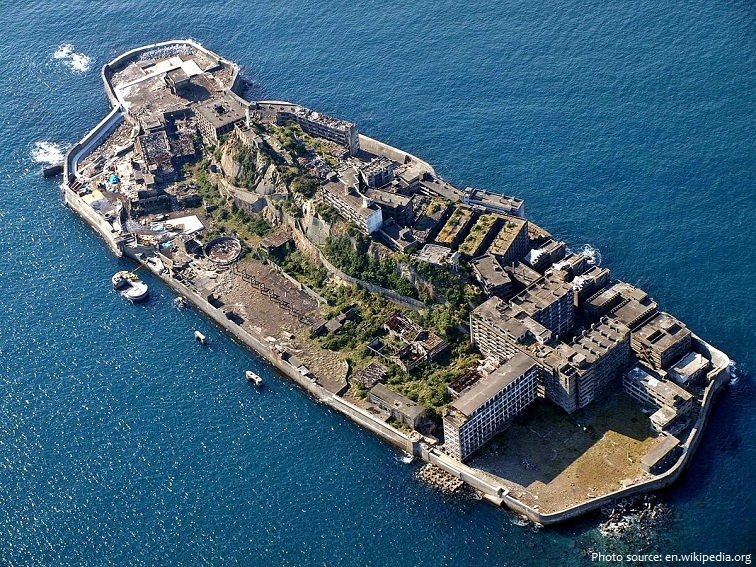Nagasaki is the capital and the largest city of Nagasaki Prefecture on the island of Kyushu in Japan.
It is situated at the head of a long bay that forms the best natural harbor on the island of Kyūshū.
The city is shaped like an amphitheatre, with its crooked streets and tiered houses clinging to the hillsides that enclose the bay.
As of July 2020, the population of Nagasaki is about 520,000 people.
The city covers a total area of 406 square kilometers (157 square miles).
Nagasaki was a small fishing village set in a secluded harbor and had little historical significance until contact with Portuguese explorers in 1543.
Portuguese introduced Roman Catholicism and guns to Japan.
Soon after the introduction of Catholicism, large groups of Japanese converted to the new religion. Feeling threatened by this new faith, the shogunate began persecuting Christians, including 26 martyrs — 6 Franciscan missionaries and 20 Japanese laypeople — who were crucified in Nagasaki in 1597. The martyrs were canonized by the Vatican in 1862, and the Oura Roman Catholic Church, built in Gothic style, was erected in 1864 to commemorate them.
In 1850s, Nagasaki became a major port for trade. It was a leading East Asian coaling station and served as the winter port of the Russian Asiatic fleet until 1903.
In the early 20th century the city became a major shipbuilding centre – it was this industry that led to Nagasaki’s being chosen as a target for the second atomic bomb dropped on Japan by the United States in World War II. The bomb was dropped on August 9, 1945, and destroyed the innermost portion of Nagasaki – between 60,000 and 80,000 persons were killed.
The city was rebuilt after the war, albeit dramatically changed. The pace of reconstruction was slow. The first simple emergency dwellings were not provided until 1946. The focus of redevelopment was the replacement of war industries with foreign trade, shipbuilding and fishing. This was formally declared when the Nagasaki International Culture City Reconstruction Law was passed in May 1949. New temples were built, as well as new churches, owing to an increase in the presence of Christianity.
Hidden Christian Sites in the Nagasaki Region is a group of twelve sites in Nagasaki Prefecture and Kumamoto Prefecture relating to the history of Christianity in Japan. The Nagasaki churches are unique in the sense that each tells a story about the revival of Christianity after a long period of official suppression. It is included in the UNESCO World Heritage List in 2007.
The Basilica of the Twenty-Six Holy Martyrs of Japan also Ōura Church is a Roman Catholic minor basilica and Co-cathedral in Nagasaki, Japan, built soon after the end of the Japanese government’s Seclusion Policy in 1853. It is also known as the Church of the 26 Japanese Martyrs. It was for many years the only Western-style building declared a national treasure, and is said to be the oldest church in Japan.
The Immaculate Conception Cathedral also St. Mary’s Cathedral, often known as Urakami Cathedral after its location Urakami, is a Roman Catholic cathedral located in Motoomachi, Nagasaki. In 1865, the French priest Bernard Petitjean discovered that almost all the Urakami villagers were Christian. Between 1869 and 1873, over 3,600 villagers were banished. During their exile, 650 died. The persecuted Kakure Kirishitan (Hidden Christians) came back to their home village after 7 years exile in 1873, and decided to construct their own church. It was built in brick in Romanesque style from the 1890’s to its completion in 1925. It was then reputedly the largest church in Asia.
The Nagasaki Atomic Bomb Museum is a remembrance to the atomic bombing of Nagasaki by the United States of America 9 August 1945 at 11:02:35 am. The bombing marked a new era in war, making Nagasaki a symbolic location for a memorial. The counterpart in Hiroshima is the Hiroshima Peace Memorial Museum. These locations symbolize the nuclear age, remind visitors of the vast destruction and indiscriminate death caused by nuclear weapons, and signify a commitment to peace.
The Nagasaki National Peace Memorial Hall for the Atomic Bomb Victims is a commemorative monument situated next to Atomic Bomb Museum. The hall was constructed as a place to remember and pray for those who died in the 1945 atomic bombing, with photos, memoirs and personal accounts of the event.
Nagasaki Peace Park is a park located in Nagasaki, and also commemorating the atomic bombing of the city on August 9, 1945 during World War II. It is next to the Atomic Bomb Museum and near the Peace Memorial Hall.
Suwa Shrine is the major Shinto shrine of Nagasaki. It is located in the northern part of the city, on the slopes of Mount Tamazono-san, and features a 277-step stone staircase leading up the mountain to the various buildings that comprise the shrine.
Meganebashi or Spectacles Bridge, over the Nakashima River was built in Nagasaki in 1634 by the Chinese monk Mokusunyoujo who is a second generation of Chinese monks living at Kofukuji Temple. It is said to be the oldest stone arch bridge in Japan along with Edo’s Nihonbashi bridge and Iwakuni’s Kintaikyou bridge and has been designated as an Important Cultural Property.
Huis Ten Bosch is a theme park which recreates the Netherlands by displaying life-sized copies of old Dutch buildings. The name Huis Ten Bosch translates into English as “House at the Woods/bush”. It is named after Huis ten Bosch in The Hague, one of the three official residences of the Dutch Royal Family. The park features many Dutch-style buildings such as hotels, villas, theatres, museums, shops and restaurants, along with canals, windmills, amusement rides, and a park planted in seasonal flowers.
Nagasaki Shinchi Chinatown is a shopping strip covering many blocks. Most of the Chinese members of Nagasaki Chinatown are of Fuzhounese descent. Nagasaki and Fuzhou established ties as sister cities in 1980 to recognize the historical connections between the two cities and Fuzhounese immigrant community.
Hashima Island commonly called Gunkanjima is an abandoned island lying about 15 kilometers (9 miles) from the city of Nagasaki. It is one of 505 uninhabited islands in Nagasaki Prefecture. The island’s most notable features are its abandoned concrete buildings, undisturbed except by nature, and the surrounding sea wall. While the island is a symbol of the rapid industrialization of Japan, it is also a reminder of its history as a site of forced labour prior to and during the Second World War.
The Prince Takamatsu Cup Nishinippon Round-Kyūshū Ekiden, the world’s longest relay race, begins in Nagasaki each November.
Kunchi, the most famous festival in Nagasaki, is held from October 7–9. It began as a celebration of autumn harvests in the late 16th century and became a shrine festival when Suwa Shrine was founded in 1642. Another purpose was to check for hidden Christians after the ban on Christianity.
The Nagasaki Lantern Festival, celebrating the Chinese New Year, is celebrated from February 18 to March 4.
